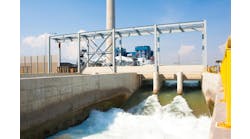By the time you read this article, I am sure we will be behind the dog days of summer and every one of us will have forgotten those hot and humid days when our process cooling tower temperature just wouldn’t budge even a degree, irrespective of what we tried. Cooling towers and fin fans are the main heat sinks at plants; any bottlenecks there cascade the problems upstream, impacting process throughput and yield. This article sheds some light on cooling towers; a future column will address fin fans and their efficiency points. (For tips on saving heat through the winter season, see “Save Cold Cash.”)
[pullquote]
Cooling towers come in several different configurations. Although the principles of the heat rejection mechanism are the same, every cooling tower design and configuration is unique and specific. Hence, the first and foremost requirement before beginning any assessment is to review the cooling tower’s design documentation. The design should provide information on heat duty (cooling tower tons), water flow rate, temperature difference (between supply and return water temperature), air flow required and approach to wet-bulb temperature. Changing any one of these parameters can impact significantly the operating performance of the cooling tower and in most cases will degrade efficiency or the ability of the cooling tower to meet design requirements. (For more on cooling tower design and improved operation, see “Upgraded Cooling System Halves Energy Costs.” )
Wet-bulb temperature, in layman terms, is the lowest temperature that we can get the ambient air by saturating it with moisture. This implies our cooling tower supply water temperature can never be below the wet-bulb temperature. As ambient air temperature and humidity change, so does the wet-bulb and, hence, our challenge. Cooling water supply temperature can significantly affect most of our processes, such as heat rejection from overhead condensers, thereby impacting operating pressures in our columns, etc. It’s imperative to manage this effectively for stable operations.
One of the standard methodologies to maintain a constant supply water temperature is to turn fans on and off based on a set operating procedure. That may be a good idea but could result in unstable operation and over-corrections. If a cooling tower bank has several cells and we work on a couple of fans at a time, we, in effect, are performing modulated control; this may be fine. Consider technologies such as two-speed fan control and variable-speed drives on the fans, which can provide good energy savings.
I also have seen water flow throttled on heat exchangers. Generally, I am not a big proponent of this for several reasons, including energy loss, negative impact on the heat transfer coefficient, fouling, etc. Lastly, the cooling tower internals include a water distribution system with flow nozzles; lack of a minimum amount of water flow could result in significant maldistribution on the tower packing, causing very inefficient tower operation.
Cooling towers, due to the way they operate, act like air scrubbers. Their fill material and the basin collect all the junk that’s in the ambient air. In addition, as water evaporates, it leaves the salts (hardness, chemicals) behind and creates an extremely corrosive, scale-forming atmosphere. So periodic maintenance and regular (or online) water testing is very important. Work with your water chemist to define the correct amount of cycles of concentration and chemical treatment you need for optimized operations.
One easy energy and cost savings opportunity exists in plants with high-pressure boilers. Blowdown from these boilers can be used very effectively as make-up water for the cooling towers. Check on the conductivity of the blowdown and compare it to the plant water being used as cooling tower make-up. Once heat is recovered from the blowdown stream (watch for a future column on this topic), it can be directly bled into the cooling towers, thereby reducing the make-up needed.
You can use a simple metric to monitor day-to-day cooling tower performance and determine conditional maintenance, if needed. Develop a correlation between heat rejected by your cooling tower system and the supply water temperature’s approach to wet-bulb. Then, periodically assess current data against this metric to check for degradation in cooling tower performance.

